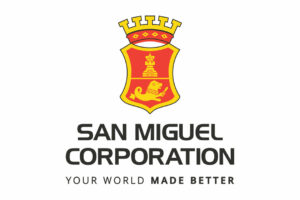Appropriate toolkit needed to stem financial stability risks

MACTAN, CEBU — The Bangko Sentral ng Pilipinas (BSP) and the International Monetary Fund (IMF) said there is a need to build the appropriate toolkit to mitigate risks in financial stability.
IMF Deputy Director May Khamis of the Monetary and Capital Markets Department said in her opening remarks at the 2023 International Conference on Financial Stability being held here that there are a lot of uncertainties in financial markets recently.
“In the wake of a global pandemic, we have seen an unexpected rise in inflation across the globe, with central banks scrambling to raise rates and contain inflation. As everyone knows, rate rises have had an impact on the financial sector, some of it unforeseen,” Ms. Khamis said.
She cited the recent banking turmoil in the US and Europe, where deposits flowed out of regional banks amid the aggressive policy tightening of central banks.
“Even though spillovers to the region have been limited, these recent events are powerful reminders of the challenges posed by the interaction between tighter monetary conditions and the vulnerabilities built up since the global financial crisis,” Ms. Khamis said.
“After years of low interest rates, tighter monetary policy is challenging banks’ effective risk management in securities portfolios and of loan exposures,” she added.
In the Philippines, the BSP has raised borrowing costs by 425 basis points (bps) to 6.25% since May last year, being one of the most aggressive central banks in the region.
“With few signs of underlying inflation abating, many central banks are expected to continue tightening; within the region, the hiking cycle is expected to be completed or near-complete in many countries, but monetary conditions may need to be tighter for longer if inflation pressures remain persistent,” Ms. Khamis said.
However, monetary tightening has created a challenging environment for bank and nonbanks alike, and some institutions were unprepared for the higher rate environment, she said, adding that tighter monetary policy may result in further episodes of financial instability.
For his part, BSP Governor Felipe M. Medalla said regulators should continue to encourage innovation in designing tools that would help safeguard financial stability.
“It’s finding the middle where there’s enough creativity [encouraged] but without thinking in terms of the public cost of mistakes,” Mr. Medalla said during his keynote address.
“We will take the state of play on systemic risk management, how stakeholders will cope with changing market conditions, and the latest tools available. We want to have the tools ready before [financial instability] happens,” he said.
Meanwhile, at a press briefing during the conference, IMF Mission Head to the Philippines Shanaka Jayanath Peiris said household and corporate debt in the country is manageable amid higher borrowing costs.
“In the Philippines, on average, corporate debt is manageable, but there are some sectors where its probably higher than the others, including real estate,” Mr. Peiris said, adding that aside from banks, it would be good to subject corporates to stress tests, as well.
In response, Mr. Medalla said regulators lack complete data that could help address emerging vulnerabilities amid higher borrowing costs.
“We are not really sure that our data on their exposure and their investment abroad is complete. Right now, we actually wish we had even more complete data,” the BSP chief said. “We’re exerting efforts so that we’ll be able to catch up on the data gaps here. I’ll be lying if I told you that I’m satisfied with our current level of granularity.”
The BSP said the ongoing conference aims to focus on Asia as a collective body in light of the systemic risk issues affecting the global economy.
In 2019, the BSP and the IMF co-hosted the inaugural regional dialogue on financial stability in Manila.
For this year, around 142 individuals are participating in the discussions, coming from 14 central banks, six regional and global organizations, and 31 market institutions. — Keisha B. Ta-asan




